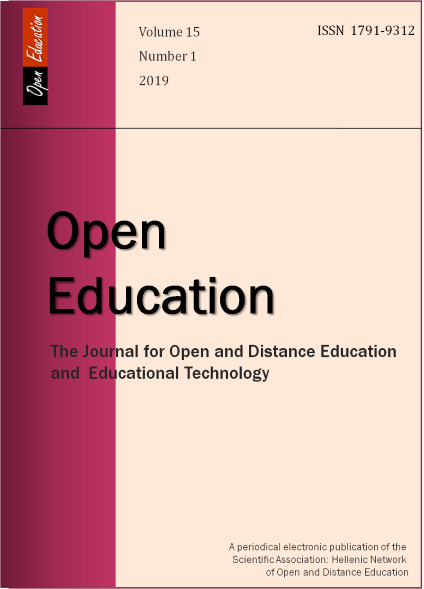Teaching mathematical concepts using web-based collaborative enviroments. An eTwinning case study

Abstract
eTwinning is an innovative European program that strengthens lifelong learning and the main purpose of which is the networking of schools with the help of new technologies. It is an initiative of the European Commission to strengthen the collaborative distance learning and the implementation of new innovative instructional methods. Through literature review, this article explores the contribution of the eTwinning project to the cultivation of basic skills, which the European Parliament identifies as keys to an individual's lifelong learning. Mathematics are included in these skills. It is an attempt to show the schools' potential to cultivate the students' European identity and European skills, such as cooperation and respect for the perceptions and culture of other people. It is also a case study aimed at exploring the cognitive, creative, cooperative and technological dimensions of an eTwinning action, as well as the attitude of 18 students towards the distance learning action, which they participated in. Τhe subject of the eTwinning practice combines mathematical concepts applied in real context.
Article Details
- How to Cite
-
Αλεξίου (Alexiou) Λ. (Labrini) Ν. (2019). Teaching mathematical concepts using web-based collaborative enviroments. An eTwinning case study. Open Education: The Journal for Open and Distance Education and Educational Technology, 15(1), 111–124. https://doi.org/10.12681/jode.18964
- Issue
- Vol. 15 No. 1 (2019)
- Section
- Section 1
Copyright Notice
Authors who publish with this journal agree to the following terms:
Authors retain copyright and grant the journal right of first publication with the work simultaneously licensed under a Creative Commons Attribution Non-Commercial License that allows others to share the work with an acknowledgement of the work's authorship and initial publication in this journal.
Authors are able to enter into separate, additional contractual arrangements for the non-exclusive distribution of the journal's published version of the work (e.g. post it to an institutional repository or publish it in a book), with an acknowledgement of its initial publication in this journal.
Authors are permitted and encouraged to post their work online (preferably in institutional repositories or on their website) prior to and during the submission process, as it can lead to productive exchanges, as well as earlier and greater citation of published work.


